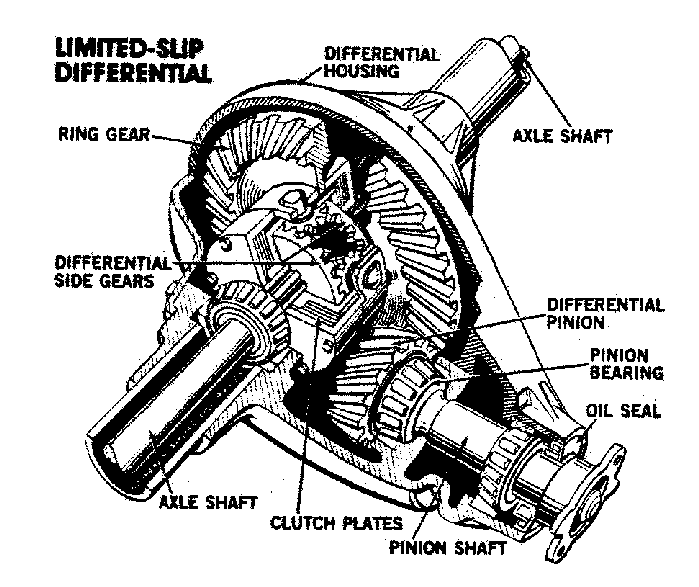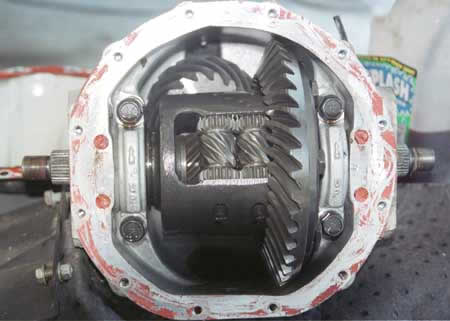joey.lisano
New member
This conversation spilled over from BAD STI's journal.
I believe drivetrain losses are not constant and dependent upon power input. A 300whp and a 400whp STI cruising down the street should have roughly the same drivetrain losses since they are using the same amount of power. At WOT, however, the 400whp car will have more drivetrain losses due to the increased power input.
Efficiency in gears is measured just like other efficiencies.
power output = efficiency * power input
output torque * angular speed = efficiency * input torque * angular speed
power lost = (1-efficiency) * input torque * angular speed
The engine makes a certain amount of a torque at a designated engine speed. Torque times angular speed is power. Only a true nerd would have his tachometer read in rad/s, so there will be some unit conversions to get between ft-lb, rpm, and hp. Regardless of the units, if you input more power, you're going to have more losses in the gears. Spur (straight cut) gears and helical gears (found in the transmission) are typically 98-99.5% efficient. On the other hand, automatic transmissions use a planetary gearset as well as a torque converter instead of a clutch. Bevel gears (found in the differential) have a wide range of efficiencies, but for intersecting axes, we can assume 98-99%. Correct me if I'm wrong, but we have three differentials, whereas FWD and RWD cars only have one. That means you're going to have more losses from the gears. From the picture below, you can see there are quite a few gears engaged within an open differential, and it only gets more complicated with more advanced differentials.
In addition to the gear losses, you have a bunch of other things. Viscous dissipation in the oil, friction everywhere, wheel bearings, rolling resistance on those 295 tires :shock:, etc.
As defined, gear losses are linear; ie, if you double the power input, you get double the losses. However, there are nonlinear losses like the viscous dissipation and rolling resistance. As a result, you cannot using scaling. If a stock STI on your tuner's dyno measured 2XX whp, you cannot use the 2XX whp and 300 bhp to reserve calculate what your bhp based on your whp. You could do that if drivetrain losses were a linear system, but they aren't. It may be a good prediction, and it may be great to brag about, but it is conceptually wrong nonetheless. Of course, you're average person doesn't understand the difference between whp and bhp, so in that case you may want to quote them on the bhp number and just say XXX hp, or maybe XXXX hp. :tard:
types of gears

manual transmission

a classic, open differential.

limited slip differential

Torsen differential

I believe drivetrain losses are not constant and dependent upon power input. A 300whp and a 400whp STI cruising down the street should have roughly the same drivetrain losses since they are using the same amount of power. At WOT, however, the 400whp car will have more drivetrain losses due to the increased power input.
Efficiency in gears is measured just like other efficiencies.
power output = efficiency * power input
output torque * angular speed = efficiency * input torque * angular speed
power lost = (1-efficiency) * input torque * angular speed
The engine makes a certain amount of a torque at a designated engine speed. Torque times angular speed is power. Only a true nerd would have his tachometer read in rad/s, so there will be some unit conversions to get between ft-lb, rpm, and hp. Regardless of the units, if you input more power, you're going to have more losses in the gears. Spur (straight cut) gears and helical gears (found in the transmission) are typically 98-99.5% efficient. On the other hand, automatic transmissions use a planetary gearset as well as a torque converter instead of a clutch. Bevel gears (found in the differential) have a wide range of efficiencies, but for intersecting axes, we can assume 98-99%. Correct me if I'm wrong, but we have three differentials, whereas FWD and RWD cars only have one. That means you're going to have more losses from the gears. From the picture below, you can see there are quite a few gears engaged within an open differential, and it only gets more complicated with more advanced differentials.
In addition to the gear losses, you have a bunch of other things. Viscous dissipation in the oil, friction everywhere, wheel bearings, rolling resistance on those 295 tires :shock:, etc.
As defined, gear losses are linear; ie, if you double the power input, you get double the losses. However, there are nonlinear losses like the viscous dissipation and rolling resistance. As a result, you cannot using scaling. If a stock STI on your tuner's dyno measured 2XX whp, you cannot use the 2XX whp and 300 bhp to reserve calculate what your bhp based on your whp. You could do that if drivetrain losses were a linear system, but they aren't. It may be a good prediction, and it may be great to brag about, but it is conceptually wrong nonetheless. Of course, you're average person doesn't understand the difference between whp and bhp, so in that case you may want to quote them on the bhp number and just say XXX hp, or maybe XXXX hp. :tard:
types of gears

manual transmission

a classic, open differential.

limited slip differential

Torsen differential

